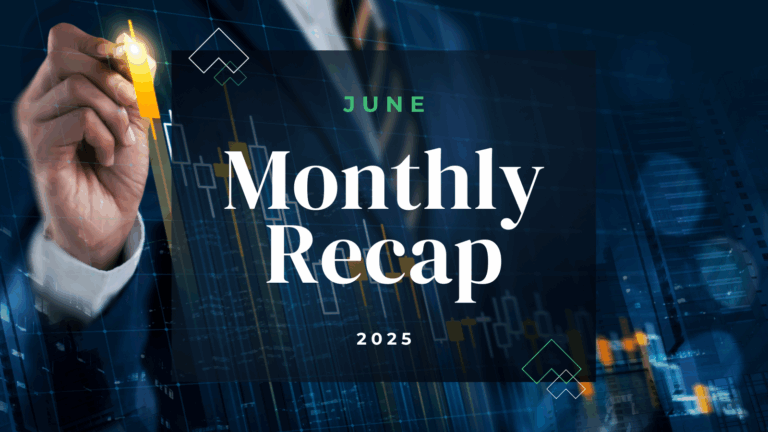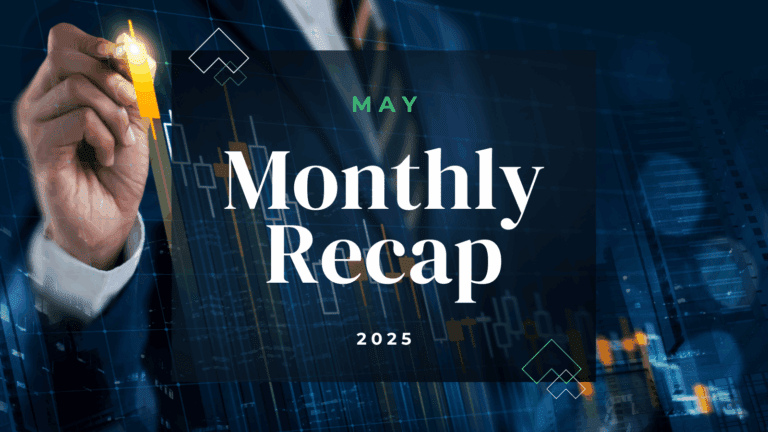By Aoifinn Devitt, CFP® – Chief Investment Officer
After a bruising 2022, 2023 was the “comeback kid” of a year. But in the fourth quarter, it seemed to defy gravity itself. All year, the rumblings of a pending recession were repeatedly defied, and by the end of the year most pundits had given up on that worn-out songbook. Chastened and subdued, they mumbled about “soft landings” and Fed pauses. Meanwhile, the markets had other ideas and took flight. It was an ebullient fourth quarter as the below charts of equity performance show.

Much of the exuberance at year end was driven by growing evidence of inflation in retreat, aided by falling energy prices (in November the inflation number hovered just above 3%). At their December meeting, the Federal Reserve suggested that it was unlikely to raise rates again in this cycle. There was some evidence that interest rates were starting to crimp both consumer and corporate activity, they said, and while they did not declare victory over inflation, there was a quiet confidence that their actions were having the desired effect. With inflation pointing down, interest rate expectations followed, and the fourth quarter saw a sharp turnaround in bond values in the last few weeks of the year, sending yields on the 10-year U.S. Treasury sharply lower. The fourth quarter rally in bonds averted what would have been an unprecedented third year of negative return for core bond funds and saw around a 100 basis point movement in the Treasury yield from its high in late October.

As bond yields fell, equity values rallied, and investors seemed to put “risk” on their Christmas list. It seemed like most flavors of risk were on the menu too. While growth continued to dominate within large cap stocks, mid and small cap saw more breadth, with even returns across value and growth and an overall positive performance in line with larger cap performance. Does this suggest that more breadth is coming into the market and that we will start to see a departure from the sharp concentration in large cap tech stocks – the storied “Magnificent Seven” which were the stars of the 2023 stock market?
Other areas such as Bitcoin and Gold also saw rallies in the fourth quarter, which, for some, may have started to ring alarm bells – but not necessarily the same ones. The surge in appetite for gold may have been a sign of concern around fiat currencies and the credit-worthiness of governments struggling with unprecedented debt loads (remember it was only in August that the U.S. credit rating was reduced by Fitch). Meanwhile, Bitcoin’s popularity provided echoes of 2021 and its heyday, and proved a little more difficult to fathom. On the one hand emerging Bitcoin ETF solutions (approved in early January 2024) may have been harbingers of greater validity and acceptance of this asset class, but on the other hand evidence of exchange failures and value destruction remained commonplace in this domain (c.f. Binance being the latest to see crippling outflows in November 2023).

It was an uneasy alliance perhaps – the twin rise of gold and Bitcoin – and reflected what has been a persistent disconnect all year between markets and consumer sentiment. While economic data has remained strong and surprised to the upside all year, consumer sentiment has been more subdued. This has been reflected in a skittishness around news flow and a tendency for rallies to be followed by lulls and sell-offs. The early part of 2024 has evinced this skittishness and the geopolitical developments in the fourth quarter, namely the outbreak of war in the Middle East, have fueled it. Surprise geopolitical flare ups are always unsettling and this one has caused considerable – and ongoing – collateral damage to international relations and Red Sea shipping routes. It is likely to impact sentiment as we enter 2024, primarily because any resolution is likely to be fraught.
Looking now to 2024 we are once again thrust into politics, election watching and the creeping uncertainty that comes from an increasingly polarized set of races. As the economy continues to defy expectations and eke out positive growth, strong corporate earnings, and provide strong levels of employment, there is every possibility that the consumer will continue to muddle through and support markets in the process. Alarm bells are still ringing – though some are receding into background noise. The recession watchers in 2023 may now, in 2024, be like the boy who cried wolf. Complacency can be dangerous. Whether or not you believe in fairy tales.
DISCLOSURES
© 2024 Advisory services offered by Moneta Group Investment Advisors, LLC, (“MGIA”) an investment adviser registered with the Securities and Exchange Commission (“SEC”). MGIA is a wholly owned subsidiary of Moneta Group, LLC. Registration as an investment adviser does not imply a certain level of skill or training. The information contained herein is for informational purposes only, is not intended to be comprehensive or exclusive, and is based on materials deemed reliable, but the accuracy of which has not been verified.
Trademarks and copyrights of materials referenced herein are the property of their respective owners. Index returns reflect total return, assuming reinvestment of dividends and interest. The returns do not reflect the effect of taxes and/or fees that an investor would incur. Examples contained herein are for illustrative purposes only based on generic assumptions. Given the dynamic nature of the subject matter and the environment in which this communication was written, the information contained herein is subject to change. This is not an offer to sell or buy securities, nor does it represent any specific recommendation. You should consult with an appropriately credentialed professional before making any financial, investment, tax or legal decision. An index is an unmanaged portfolio of specified securities and does not reflect any initial or ongoing expenses nor can it be invested in directly. Past performance is not indicative of future returns. All investments are subject to a risk of loss. Diversification and strategic asset allocation do not assure profit or protect against loss in declining markets. These materials do not take into consideration your personal circumstances, financial or otherwise.
DEFINITIONS
The Treasury yield is the effective annual interest rate that the U.S. government pays on its debt obligations, expressed as a percentage. Broadly, the Treasury yield is the annual return investors can expect from holding a U.S. government security with a given maturity. The U.S. Treasury yield curve refers to a line chart that depicts the yields of short-term Treasury bills compared to the yields of long-term Treasury notes and bonds. The Treasury yield curve (also referred to as the term structure of interest rates) shows yields at fixed maturities, such as one, two, three, and six months and one, two, three, five, seven, 10, 20, and 30 years. Because Treasury bills and bonds are resold daily on the secondary market, yields on the notes, bills, and bonds fluctuate.
The S&P 500 Index is a free-float capitalization-weighted index of the prices of approximately 500 large-cap common stocks actively traded in the United States.
The Russell 2000® Index is an index of 2000 issues representative of the U.S. small capitalization securities market.
The MSCI EAFE Index is a free float-adjusted market capitalization index designed to measure the equity market performance of developed markets, excluding the U.S. and Canada.
The MSCI Emerging Markets Index is a float-adjusted market capitalization index that consists of indices in 21 emerging economies.
Bloomberg U.S. Treasury Bond Index includes public obligations of the US Treasury, i.e. US government bonds. Certain Treasury bills are excluded by a maturity constraint. In addition, certain special issues, such as state and local government series bonds (SLGs), as well as U.S. Treasury TIPS, are excluded.
The Bloomberg U.S. Aggregate Bond Index is an index, with income reinvested, generally representative of intermediate-term government bonds, investment grade corporate debt securities and mortgage-backed securities.
The Bloomberg US Corporate High Yield Bond Index measures the USD-denominated, high yield, fixed-rate corporate bond market. Securities are classified as high yield if the middle rating of Moody’s, Fitch and S&P is Ba1/BB+/BB+ or below. Bonds from issuers with an emerging markets country of risk, based on the indices’ EM country definition, are excluded.
The FTSE Nareit All Equity REITs Index is a free-float adjusted, market capitalization-weighted index of U.S. equity REITs. Constituents of the index include all tax-qualified REITs with more than 50 percent of total assets in qualifying real estate assets other than mortgages secured by real property.
The S&P Global Listed Infrastructure index measures the performance of global companies that are engaged in infrastructure and related operations. It provides liquid and tradable exposure to 75 companies from around the world that represent the listed infrastructure universe. To create diversified exposure, the index includes three distinct infrastructure clusters: utilities, transportation and energy.







